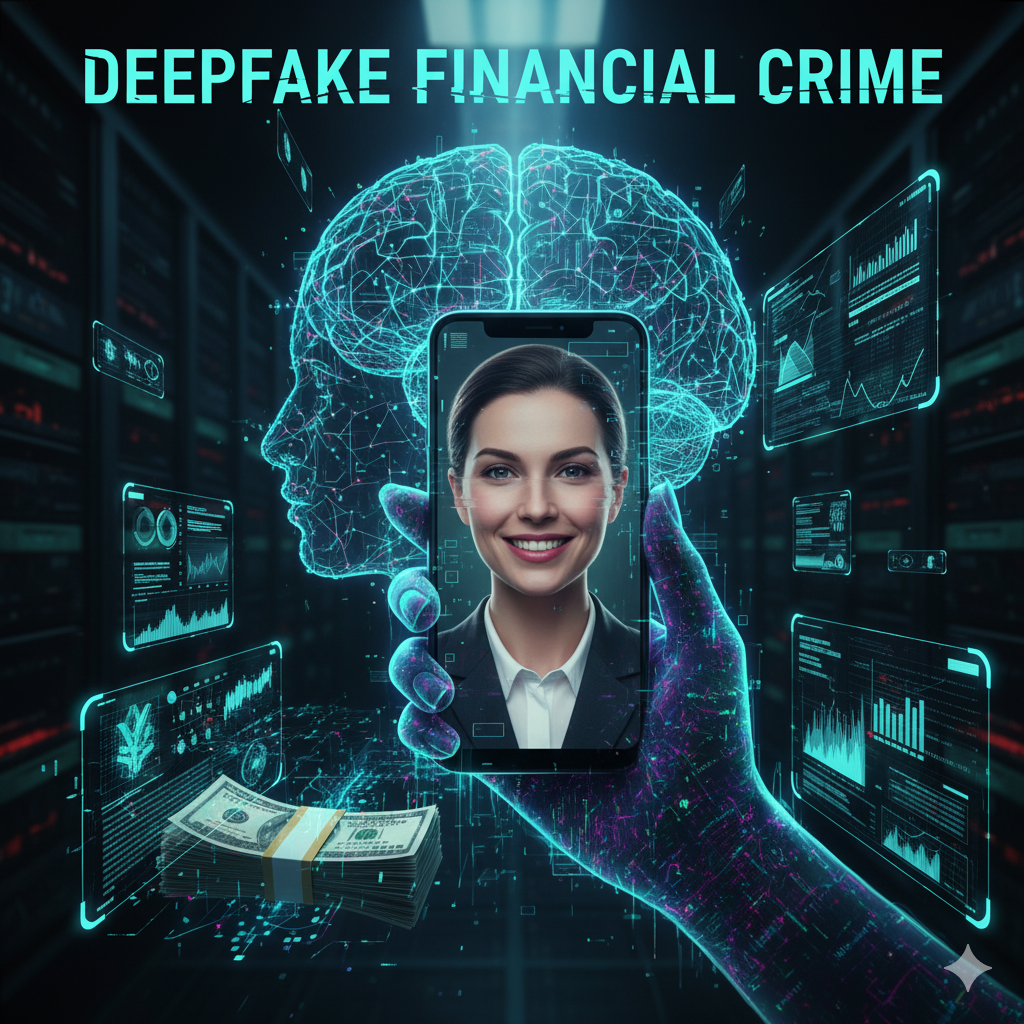The world’s biggest financial watchdog just issued a stark warning: the greatest threat to global finance isn’t hackers, but the rise of Deepfake Financial Crime enabled by generative AI. Criminals are weaponizing these tools to commit fraud, bypass security, and launder illicit funds faster and more convincingly than ever before. This shift isn’t theoretical—it’s happening now. The Financial Action Task Force (FATF), the global body setting Anti-Money Laundering (AML) standards, just approved new guidance (October 2025) explicitly focused on the surge in Deepfake Financial Crime. Here’s a breakdown of how AI is being used to supercharge financial crime and what you need to know to stay protected.
This shift isn’t theoretical it’s happening now. The Financial Action Task Force (FATF), the global body setting Anti-Money Laundering (AML) standards, just approved new guidance (October 2025) explicitly focused on the rising threat of AI and deepfakes. Here’s a breakdown of how AI is being used to supercharge financial crime and what you need to know to stay protected.
1. Bypassing Identity Checks: The Rise of the Synthetic Ghost
The core of modern financial security is Know Your Customer (KYC), which relies on verifying a user’s identity. Deepfakes shatter this trust barrier.
- The Virtual Shell Company: Criminals are using Generative AI to create hyper-realistic, yet entirely fictitious, chief executives and directors. These deepfake individuals are then used in video calls to successfully pass verification processes required to open bank accounts for shell corporations.
- Mass-Scale Account Opening: AI tools allow fraudsters to generate thousands of unique, convincing profile photos, video loops, and voice samples. This lets them automate the process of opening and operating countless mule accounts, enabling money laundering at an unprecedented scale.
- The Problem for Banks: Financial institutions using automated video or photo-ID checks are increasingly vulnerable. AI can be trained specifically to exploit the digital security measures designed to confirm a person’s “liveness” (proof they are real and present).
2. The Next Generation of CEO Fraud and Phishing
While old phishing emails were often riddled with grammatical errors, the new attacks are indistinguishable from legitimate communication.
- The CEO Voice Scam 🗣️: This is not new, but AI has made it near-perfect. Fraudsters synthesize a senior executive’s voice (the “deepfake boss”) using minimal audio samples, then call a finance department employee to urgently authorize a wire transfer to a ‘new vendor.’ The voice, tone, and mannerisms are now so accurate that they bypass human suspicion.
- Hyper-Realistic Phishing: Generative AI is capable of analyzing an employee’s communication style, company memos, and internal templates to draft perfectly worded, contextually relevant phishing messages. These personalized attacks bypass standard email filters and human caution, leading to massive corporate data breaches and financial theft.
- The Automation of Crime: Why hire a team of scammers when one AI model can create all the documents, the fake identity, the convincing phone script, and the communication in minutes? AI is dramatically lowering the barrier to entry for sophisticated financial crime.
3. The Regulatory Challenge: Chasing a Phantom
The recent FATF warning highlights the increasing disconnect between fast-moving technology and slow-moving global regulation.
The FATF’s Horizon Scan alerts both public and private sectors to the current and potential future illicit finance risks presented by artificial intelligence (AI) and deepfakes critical information for countries looking to strengthen asset recovery and close regulatory loopholes.
The challenge is that current AML defenses are designed to look for patterns of human behavior. AI-driven money laundering operations are more complex, faster, and operate across so many jurisdictions simultaneously that traditional tracking methods are overwhelmed.
4. Your Defense: How to Spot an AI-Driven Attack
The battle against the AI money launderer requires a layered approach:
For Individuals & Businesses:
- Stop, Think, Verify: If you receive an urgent request for money, especially one bypassing normal security protocols (emailing instead of using official finance software), always call the person back using a known, trusted number—not the number used for the initial contact.
- Liveness Testing: If using a digital service for KYC, ensure it requires advanced liveness testing (e.g., asking you to turn your head, blink, or repeat random words) to defeat simple deepfake video loops.
- Use MFA Everywhere: Enable Multi-Factor Authentication (MFA) on all financial accounts. This acts as a crucial human gate, ensuring that even if a deepfake opens an account, they can’t access it without a physical device.
For Financial Institutions:
- Invest in Counter Deepfake Tech: Implement AI-powered tools designed specifically to detect deepfake media, synthetic faces, and voice spoofing during customer onboarding.
- Focus on Behavior, Not Just ID: Shift detection efforts from merely verifying the ID to analyzing the behavior and transactional patterns of the new account. Look for sudden, high-volume activity inconsistent with the stated business purpose.
- Employee Training is Key: Employees must be trained on the nuances of generative AI—not just to spot bad grammar, but to spot unnatural perfection in communication, which can be an AI tell.
The digital trust system is under attack. While AI offers immense benefits, recognizing its dark side the AI Money Launderer is the first critical step toward building a secure financial future.

